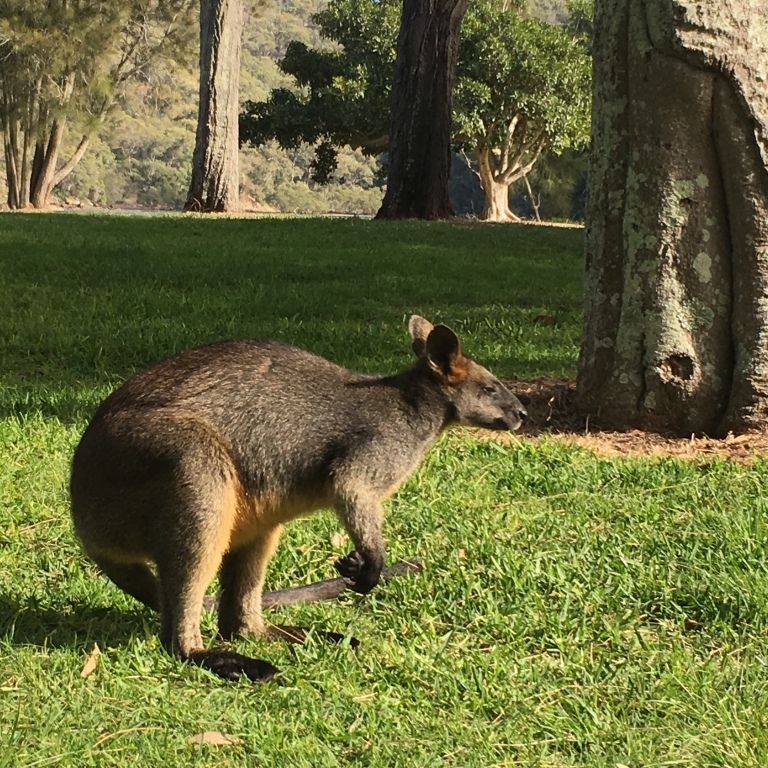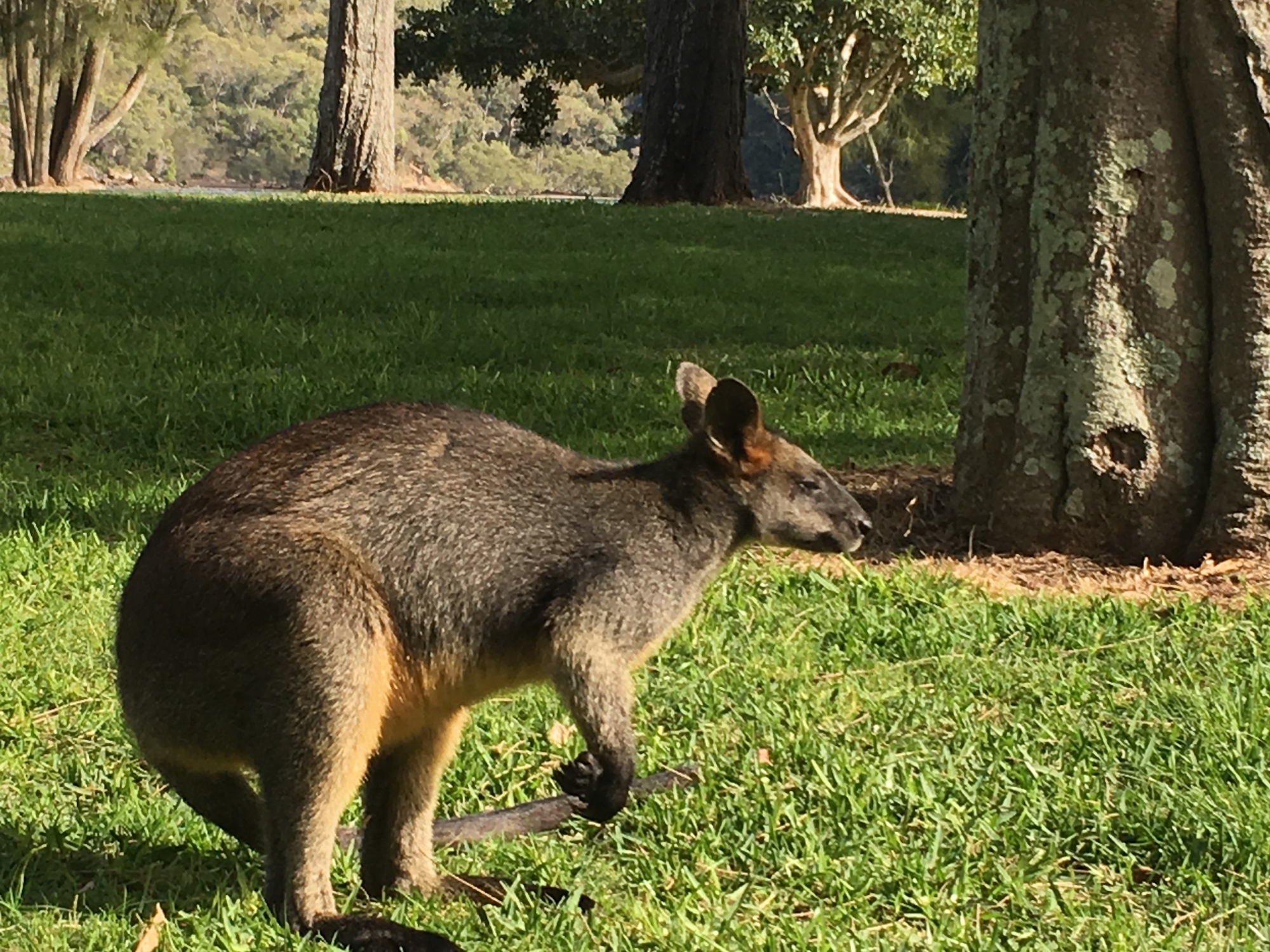
The letter to the UTS Library of 2117 is not exactly the project I proposed to do as part of my residency. This weekend has reminded me of how it took its current form. Conversations yesterday with two conservation-minded friends while bushwalking in Ku-ring-gai Chase National Park reminded me of the film Racing Extinction, which I watched as I was waiting for my Australian visa in March. The film most definitely impacted how I then approached both projects at the Library; the other project focuses on magical experiences of nature in urban environments like Sydney and New York. Louie Psihoyos, photographer and director behind the film, says: “We always think there’s going to be somebody else around to save these animals.” He continues, “I want people to understand that we’re the only generation left to save these animals. There’s no other future generation that we can count on to save us. It’s us.” In the film Jane Goodall predicts the future: “In 200 years people will look back on this particular period and say to themselves, how did those people at that time just allow all these amazing creatures to vanish?”
When I ask people, what would you like to say to people in a century from now, most people fall silent initially. Some have a look of almost-panic on their faces, and several have expressed guilt and apologies. One person responded, “Do you know that we used to have elephants?” Although I acknowledge the underlying despair in the statement, I have not stitched that phrase into the letter, because I refuse to give up on elephants. I refuse to accept that their extinction is inevitable; we still have a say in the matter. I cannot say I feel the same about the future of the Vaquita porpoise. They numbered approximately 30 last November, a number so low that extinction is now virtually certain. I know that species have rebounded from lower numbers, for example the Whooping Crane from 15 birds in the late 1930s to more than 600 individuals today, and the Black Robin in New Zealand from one female in the 1980s to more than 250 birds today. Unlike with those species, the current conservation actions and inactions do not point towards a positive outcome for the Vaquita. We will lose it because we humans have an appetite for the swim bladder of a fish called Totoaba; their bladders are used in Chinese medicine and fetch a high price. The porpoises are killed as by-catch. I say we humans because we must omit the thinly disguised racism from these conversations; countless times I have heard westerners speak as if the cause of the current mass extinction rests primarily on non-western cultures. It does not: it is a shared challenge that we can only solve together, working at countless local levels with a shared global goal. As the film points out (and the same case is made by the film Cowspiracy) our meat and dairy consumption in the west is a major cause of biodiversity loss and driver of anthropogenic global warming. That said, I feel acute grief for the Vaquita. Following the Baiji, the Yangtze river dolphin a decade ago, the Vaquita is likely to become the second cetacean to vanish in my lifetime. Writing this has me choked up.
In the face of this, it is very easy to become discouraged and cynical. As I’ve written before, I choose hope. Hope is what I want to stitch into the letter. Even in a week where I’ve experienced the impact of having been undermined professionally and having had to give up on a goal that I’d worked towards for six months and that until last week I thought was attainable (unrelated to the residency), I choose hope. I’m regrounding myself in the possibility of flourishing for all, now and in the future. I cannot transform your cynicism just as you cannot transform mine; it’s a task for each of us individually, and it is a task without an end. Imagine the difference it would make in the world if every one of us dealt with our cynicism continuously: what would that make available? In doing so, consider that our cynicism or its absence colours all conversations and interactions we have with our fellow human beings. In Design for Micro-Utopias, John Wood (2007) passionately writes: “In order to move beyond cynicism and pessimism, we must therefore learn to dream. If we lose the art of dreaming for ourselves we will eventually become unable to change anything. For this reason, envisioning and exchanging dreams of better possible futures should be seen as a civic duty that is far more important than voting or paying taxes.” (The book was written a decade before the events of 2016 so one might argue the point on voting…) I invite you to dream: what kind of world are you committed to creating? Notice your cynicism when it crops us and deal with it swiftly. As you dare to dream, hear Jane Goodall: “Without hope, people fall into apathy. There’s still a lot left that’s worth fighting for.”

Timo, this is a beautiful call for hope, and articulates much of what I’ve been thinking about lately too. I’ll continue working against my cynicism- it’s so much easier to be dismissively cynical than engage deeply enough to find hope.
I’ll add here what we discussed on Wednesday, about where science fiction sits in this, for me.
Novelists invite us to dream, but also to empathise. Reading fiction allows us to inhabit other people’s world views, to walk in the shoes of a narrrator in order to understand the world from another perspective (empathy). There is an emerging sub-genre of speculative (or, science) fiction dubbed ‘cli-fi’ that invites us to imagine possible futures if the predicted effects of climate change come to be. Through reading science fiction we are able to better understand the nuance and complexities these possibilities than through we are through reading scientific reports (I think).
There is a long history of speculative fiction, but a shorter history of such an approach to design. Whether we call it ‘critical practice’, ‘speculative practice’, ‘design futures’ or any other term, I think this is an interesting space for design researchers to explore. Through academic positions, we (you and I, and other practitioner researchers) step out of commercial design practice, to explore ways we might make and send things into the world without commercial constraints on our thinking or work.* Your residency is a wonderful example of that. You ask us to speculate 100 years into the future, we find it confronting- where to we turn to think about this more? I’d suggest reading Margaret Atwood’s excellent MaddAdam trilogy, and James Bradley’s Clade, as a start.
* this is not to say critical, exploratory or activist projects cannot happen in commercial practice (you’ve demonstrated this through your industry partnerships) but that it’s easier to argue for them when we have ‘case studies’ for what these research driven design projects might look like, and we’re just developing a ‘canon’ of these now
LikeLiked by 1 person
Thank you, Zoe. Bouncing off from your comment, there’s Dunne & Raby’s ‘Speculative Everything’, which I have but haven’t got to yet. From what I understand it is about speculation in a design context. Dunne & Raby are with The New School and I met Raby a few weeks ago. George is reading the book, I think; I’ll quiz him.
Atwood trilogy is also on reading list; thank you x
LikeLike
I’ve looked at a bit of their stuff (primarily during other people’s lectures) and it’s interesting but often – for me – sits at the fine art end of spectrum. I’ll swing by to discuss this week.
LikeLike
Looking forward.
LikeLike